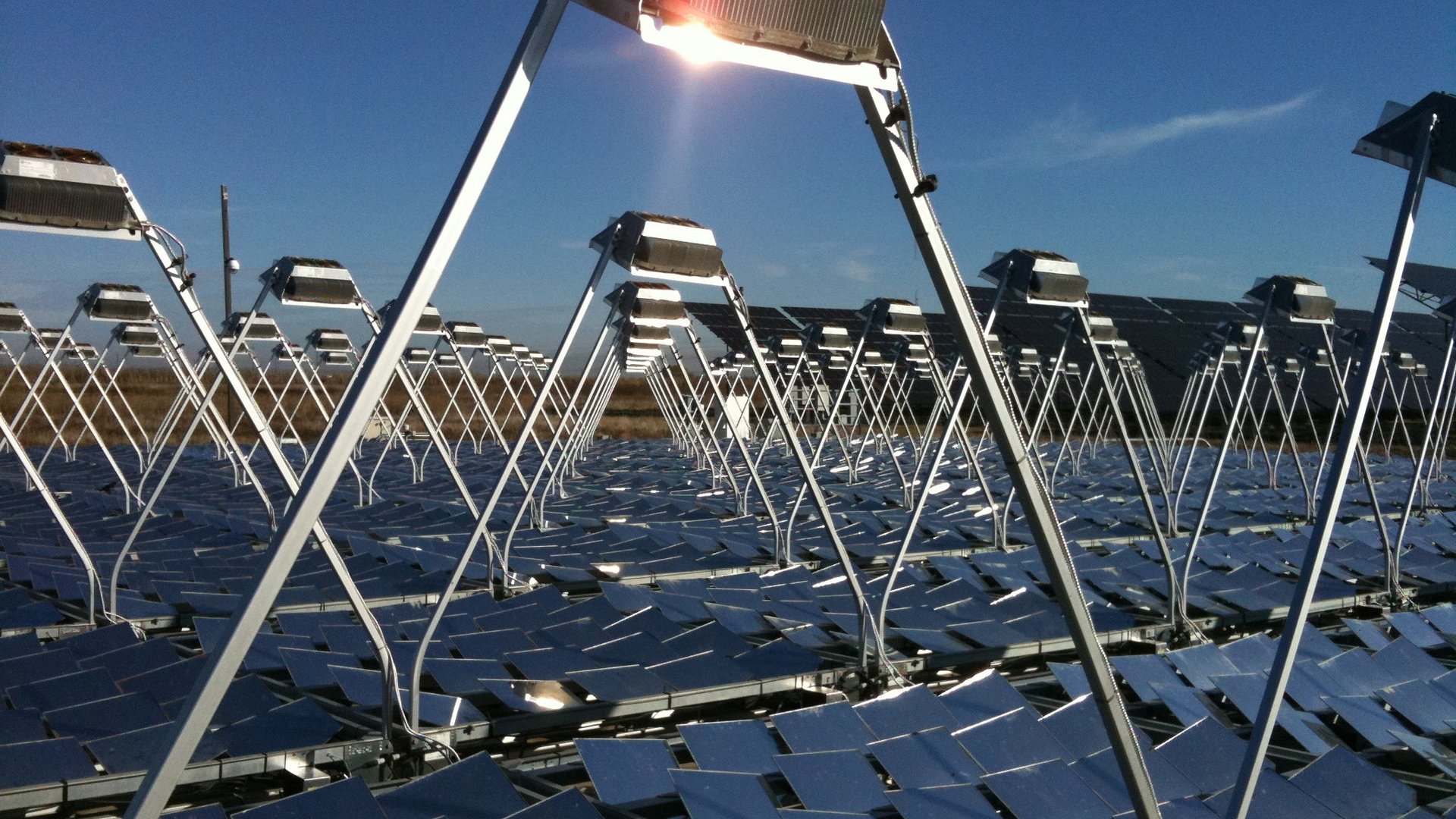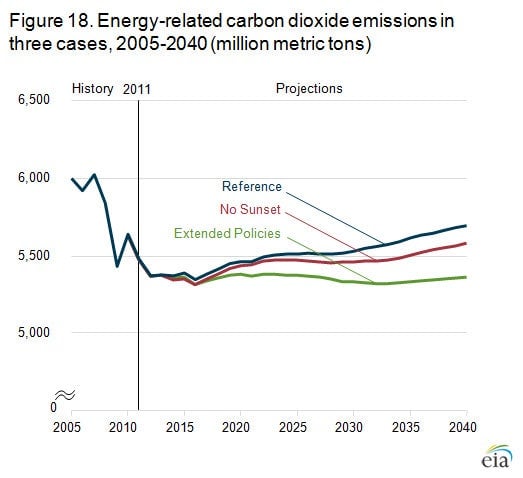How renewable energy could beat natural gas to the future
We’ve taken the US Energy Information Administration (EIA) to task for its projections of future energy production and consumption that assumes the nation’s fossil fuel addiction will continue until the dinosaur juice runs dry.


We’ve taken the US Energy Information Administration (EIA) to task for its projections of future energy production and consumption that assumes the nation’s fossil fuel addiction will continue until the dinosaur juice runs dry.
Well, today the agency threw caution to the wind and focused on an alternative reality as part of its Annual Energy Outlook, due to be released on May 2. In the latest chapter, EIA examined what the world might look like in 2040 if current renewable energy incentives do not end in 2014 and 2016 as scheduled.
Under that scenario, green energy production grows, accounting for around 23% of total electricity generation in 2040, compared to 16% if business as usual continues. Given the skyrocketing growth in solar and wind generation over the past several years—half of America’s solar capacity was installed just in 2012—that forecast still seems conservative.
It doesn’t take into account, for instance, the likelihood that renewable energy will become cost competitive with fossil fuels, even without subsidies, due to technological breakthroughs and economies of scale. In fact, in some areas of the US with high electricity costs, such as California, that’s already starting to happen.
But here’s the interesting thing about even the EIA’s conservative forecast: The increase in renewable energy production starts to displace natural gas. (Nuclear power also takes a hit.) The agency estimates that electricity generation from natural gas-fired power plants would be 13% to 16% lower in 2040 compared to its standard forecasts. Not good news for all those investors betting on the shale gas boom.
But good news for the planet. Carbon dioxide emissions from energy productions would declined between 1.7% and 2.8% compared to business as usual, according to the EIA. Electricity prices would also drop between 3.9% and 6.3%.

The loss of tax revenues from extending current renewable energy subsidies would be $4 billion. Not calculated are the lower healthcare costs from eliminating emission of pollutants from power plants associated with heart and lung disease.